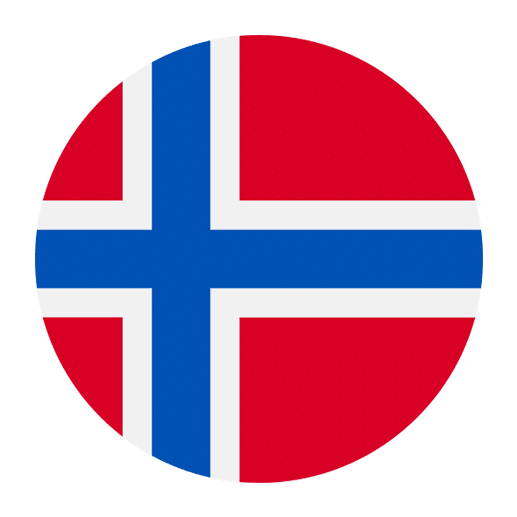Norwegian, a North Germanic language spoken primarily in Norway, may seem challenging to English speakers at first. However, with some practice and persistence, you can quickly get a grasp of the basics. One of the first steps in learning any language is mastering common greetings and farewells. These phrases are essential for daily interactions and will help you make a good impression when you meet new people.
In this article, we will explore some of the most common greetings and farewell phrases in Norwegian. We’ll cover both formal and informal expressions, as well as phrases used at different times of the day. By the end of this guide, you’ll have a solid foundation to build upon as you continue your journey in learning Norwegian.
Common Greetings
Hei
The word “hei” (pronounced “hi”) is the most common way to say hello in Norwegian. It is used in both formal and informal settings and is equivalent to the English “hi.” You can use “hei” at any time of the day to greet someone.
Example:
– Hei, hvordan har du det? (Hi, how are you?)
Hallo
“Hallo” (pronounced “hah-loh”) is another way to say hello. It is slightly more formal than “hei” but still quite common. This greeting is versatile and can be used in various social settings.
Example:
– Hallo, hyggelig å møte deg. (Hello, nice to meet you.)
God morgen
“God morgen” (pronounced “goo mohr-gen”) means good morning. This greeting is used specifically in the morning hours, typically until around noon.
Example:
– God morgen, har du sovet godt? (Good morning, did you sleep well?)
God dag
“God dag” (pronounced “goo dahg”) translates to good day. It is a more formal greeting and can be used throughout the day, making it a versatile option for various occasions.
Example:
– God dag, hvordan står det til? (Good day, how are you?)
God ettermiddag
“God ettermiddag” (pronounced “goo eh-tehr-mee-dahg”) means good afternoon. This phrase is used in the afternoon, generally from around noon to early evening.
Example:
– God ettermiddag, hva gjør du i dag? (Good afternoon, what are you doing today?)
God kveld
“God kveld” (pronounced “goo kvell”) translates to good evening. This greeting is used in the evening hours, typically from around 6 PM onwards.
Example:
– God kveld, har du hatt en fin dag? (Good evening, have you had a good day?)
Hei på deg
“Hei på deg” (pronounced “hi paw dai”) is an informal way to say hi to you. It is a friendly and casual greeting often used among friends and family.
Example:
– Hei på deg, hva skjer? (Hi to you, what’s happening?)
Common Farewell Phrases
Ha det
“Ha det” (pronounced “hah deh”) is the most common way to say goodbye in Norwegian. It is informal and can be used in a variety of social settings. The full phrase is “ha det bra” which means “have it good,” but most people simply say “ha det.”
Example:
– Ha det, vi ses senere! (Goodbye, see you later!)
Farvel
“Farvel” (pronounced “fahr-vel”) is a more formal way to say goodbye. It is less commonly used in everyday conversation and is typically reserved for more formal occasions or when you don’t expect to see the person for a long time.
Example:
– Farvel, og lykke til! (Goodbye, and good luck!)
Vi ses
“Vi ses” (pronounced “vee ses”) translates to see you. It is an informal farewell phrase used when you expect to see the person again soon.
Example:
– Vi ses i morgen! (See you tomorrow!)
Vi snakkes
“Vi snakkes” (pronounced “vee snahk-ehs”) means we’ll talk. This phrase is used informally and implies that you will speak to the person again soon, either in person or over the phone.
Example:
– Vi snakkes senere! (We’ll talk later!)
Ha en fin dag
“Ha en fin dag” (pronounced “hah en feen dahg”) means have a nice day. This phrase is a pleasant way to bid someone farewell and wish them well for the rest of the day.
Example:
– Ha en fin dag på jobben! (Have a nice day at work!)
Ha en god kveld
“Ha en god kveld” (pronounced “hah en goo kvell”) translates to have a good evening. This phrase is used in the evening to wish someone a pleasant night.
Example:
– Ha en god kveld, og sov godt! (Have a good evening, and sleep well!)
God natt
“God natt” (pronounced “goo naht”) means good night. This phrase is used when you are parting ways with someone at night or before going to bed.
Example:
– God natt, drøm søtt! (Good night, sweet dreams!)
Expressions of Politeness
In addition to greetings and farewells, it’s important to know some polite expressions that can enhance your interactions. Here are a few:
Takk
“Takk” (pronounced “tahk”) means thank you. It is a versatile word that can be used in almost any situation where you want to express gratitude.
Example:
– Takk for hjelpen. (Thank you for the help.)
Vær så snill
“Vær så snill” (pronounced “vair soh snel”) means please. This phrase is used to make requests more polite.
Example:
– Kan du hjelpe meg, vær så snill? (Can you help me, please?)
Unnskyld
“Unnskyld” (pronounced “oon-shyld”) means excuse me or sorry. It is used to get someone’s attention or to apologize.
Example:
– Unnskyld, hvor er toalettet? (Excuse me, where is the restroom?)
Ingen årsak
“Ingen årsak” (pronounced “in-gen oh-sahk”) translates to you’re welcome. It is a common response when someone thanks you.
Example:
– Takk for hjelpen! (Thank you for the help!)
– Ingen årsak. (You’re welcome.)
Practice Makes Perfect
The best way to become comfortable with these phrases is to practice them regularly. Try to incorporate them into your daily interactions, whether you’re speaking to native Norwegian speakers or practicing with fellow learners. Repetition and real-life usage will help you remember and internalize these common greetings and farewells.
Role-Playing Scenarios
One effective way to practice is through role-playing scenarios. Here are a few examples:
Scenario 1: Meeting a New Colleague
You: Hei, jeg heter [Your Name]. Hva heter du?
Colleague: Hei, jeg heter [Colleague’s Name]. Hyggelig å møte deg.
You: Hyggelig å møte deg også. Hvordan har du det?
Colleague: Jeg har det bra, takk. Og du?
You: Jeg har det bra. Ha en fin dag!
Colleague: Ha det!
Scenario 2: Saying Goodbye After a Dinner
You: Takk for en hyggelig kveld!
Friend: Ingen årsak. Det var veldig hyggelig å ha deg her.
You: Ha en god kveld!
Friend: Ha en god kveld, og sov godt!
Conclusion
Learning common greetings and farewell phrases in Norwegian is a crucial step in becoming conversational in the language. These expressions are the building blocks of everyday interactions and will help you navigate social situations with ease. By practicing these phrases regularly and using them in real-life contexts, you’ll quickly become more comfortable and confident in your Norwegian language skills.
Remember, consistency is key. Keep practicing, and don’t be afraid to make mistakes. Every interaction is an opportunity to learn and improve. Lykke til! (Good luck!)

